Time/Room: Friday, May 18, 2018, 2:30 – 4:30 pm, Talk Room 1
Organizer(s): Katja Fiehler, Department of Psychology and Sports Science, Giessen University, Giessen, Germany
Presenters: Mary Hayhoe, Miriam Spering, Cristina de la Malla, Katja Fiehler, Kathleen Cullen
Symposium Description
Prediction is an essential mechanism enabling humans to prepare for future events. This is especially important in a dynamically changing world, which requires rapid and accurate responses to external stimuli. Predictive mechanisms work on different time scales and at various information processing stages. They allow us to anticipate the future state both of the environment and ourselves. They are instrumental to compensate for noise and delays in the transmission of neural signals and allow us to distinguish external events from the sensory consequences of our own actions. While it is unquestionable that predictions play a fundamental role in perception and action, their underlying mechanisms and neural basis are still poorly understood. The goal of this symposium is to integrate recent findings from psychophysics, sensorimotor control, and electrophysiology to update our current understanding of predictive mechanisms in different sensory and motor systems. It brings together a group of leading scientists at different stages in their career who all have made important contributions to this topic. Two prime examples of predictive processes are considered: when interacting with moving stimuli and during self-generated movements. The first two talks from Hayhoe and Spering will focus on the oculomotor system which provides an excellent model for examining predictive behavior. They will show that smooth pursuit and saccadic eye movements significantly contribute to sucessful predictions of future visual events. Moreover, Hayhoe will provide examples for recent advances in the use of virtual reality (VR) techniques to study predictive eye movements in more naturalistic situations with unrestrained head and body movements. De la Malla will extend these findings to the hand movement system by examining interceptive manual movements. She will conclude that predictions are continuously updated and combined with online visual information to optimize behavior. The last two talks from Fiehler and Cullen will take a different perspective by considering predictions during self-generated movements. Such predictive mechanims have been associated with a forward model that predicts the sensory consequences of our own actions and cancels the respective sensory reafferences. Fiehler will focus on such cancellation mechanisms and present recent findings on tactile suppression during hand movements. Based on electrophysiological studies on self-motion in monkeys, Cullen will finally answer where and how the brain compares expected and actual sensory feedback. In sum, this symposium targets the general VSS audience and aims to provide a novel and comprehensive view on predictive mechanisms in perception and action spanning from behavior to neurons and from strictly laboratory tasks to (virtual) real world scenarios.
Presentations
Predictive eye movements in natural vision
Speaker: Mary Hayhoe, Center for Perceptual Systems, University of Texas Austin, USA
Natural behavior can be described as a sequence of sensory motor decisions that serve behavioral goals. To make action decisions the visual system must estimate current world state. However, sensory-motor delays present a problem to a reactive organism in a dynamically changing environment. Consequently it is advantageous to predict future state as well. This requires some kind of experience-based model of how the current state is likely to change over time. It is commonly accepted that the proprioceptive consequences of a planned movement are predicted ahead of time using stored internal models of the body’s dynamics. It is also commonly assumed that prediction is a fundamental aspect of visual perception, but the existence of visual prediction and the particular mechanisms underlying such prediction are unclear. Some of the best evidence for prediction in vision comes from the oculomotor system. In this case, both smooth pursuit and saccadic eye movements reveal prediction of the future visual stimulus. I will review evidence for prediction in interception actions in both real and virtual environments. Subjects make accurate predictions of visual target motion, even when targets follow trajectories determined by the complex dynamics of physical interactions, and the head and body are unrestrained. These predictions appear to be used in common by both eye and arm movements. Predictive eye movements reveal that the observer’s best guess at the future state of the environment is based on image data in combination with representations that reflect learnt statistical properties of dynamic visual environments.
Smooth pursuit eye movements as a model of visual prediction
Speaker: Miriam Spering, Department of Ophthalmology & Visual Sciences, University of British Columbia, Vancouver, Canada
Real-world movements, ranging from intercepting prey to hitting a ball, require rapid prediction of an object’s trajectory from a brief glance at its motion. The decision whether, when and where to intercept is based on the integration of current visual evidence, such as the perception of a ball’s direction, spin and speed. However, perception and decision-making are also strongly influenced by past sensory experience. We use smooth pursuit eye movements as a model system to investigate how the brain integrates sensory evidence with past experience. This type of eye movement provides a continuous read-out of information processing while humans look at a moving object and make decisions about whether and how to interact with it. I will present results from two different series of studies: the first utilizes anticipatory pursuit as a means to understand the temporal dynamics of prediction, and probes the modulatory role of expectations based on past experience. The other reveals the benefit of smooth pursuit itself, in tasks that require the prediction of object trajectories for perceptual estimation and manual interception. I will conclude that pursuit is both an excellent model system for prediction, and an important contributor to successful prediction of object motion.
Prediction in interceptive hand movements
Speaker: Cristina de la Malla, Department of Human Movement Sciences, Vrije Universiteit Amsterdam, The Netherlands
Intercepting a moving target requires spatial and temporal precision: the target and the hand need to be at the same position at the same time. Since both the target and the hand move, we cannot just aim for the target’s current position, but need to predict where the target will be by the time we reach it. We normally continuously track targets with our gaze, unless the characteristics of the task or of the target make it impossible to do so. Then, we make saccades and direct our movements towards specific locations where we predict the target will be in the future. If the precise location at which one is to hit the target only becomes evident as the target approaches the interception area, the gaze, head and hand movements towards this area are delayed due to not having the possibility of predicting the target future position. Predictions are continuously updated and combined with online visual information to optimize our actions: the less predictable the target’s motion, the more we have to rely on online visual information to guide our hand to intercept it. Updating predictions with online information allow to correct for any mismatch between the predicted target position and the hand position during an on-going movement, but any perceptual error that is still present at the last moment at which we can update our prediction will result in an equivalent interception error.
Somatosensory predictions in reaching
Speaker: Katja Fiehler, Department of Psychology and Sports Science, Giessen University, Giessen, Germany
Movement planning and execution lead to changes in somatosensory perception. For example, tactile stimuli on a moving compared to a resting limb are typically perceived as weaker and later in time. This phenomenon is termed tactile suppression and has been linked to a forward model mechanism which predicts the sensory consequences of the self-generated action and as a result discounts the respective sensory reafferences. As tactile suppression is also evident in passive hand movements, both predictive and postdictive mechanisms may be involved. However, its functional role is still widely unknown. It has been proposed that tactile suppression prevents sensory overload due to the large amount of afferent information generated during movement and therefore facilitates processing of external sensory events. However, if tactile feedback from the moving limb is needed to gain information, e.g. at the fingers involved in grasping, tactile sensitivity is less strongly reduced. In the talk, I will present recent results from a series of psychophysical experiments that show that tactile sensitivity is dynamically modulated during the course of the reaching movement depending on the reach goal and the predicted movement consequences. These results provide first evidence that tactile suppression may indeed free capacities to process other, movement-relevant somatosensory signals. Moreover, the observed perceptual changes were associated with adjustments in the motor system suggesting a close coupling of predictive mechanisms in perception and action.
Prediction during self-motion: the primate cerebellum selectively encodes unexpected vestibular information
Speaker: Kathleen Cullen, Department of Physiology, McGill University, Montréal, Québec, Canada
A prevailing view is that the cerebellum is the site of a forward model that predicts the expected sensory consequences of self-generated action. Changes in motor apparatus and/or environment will cause a mismatch between the cerebellum’s prediction and the actual resulting sensory stimulation. This mismatch – the ‘sensory prediction error,’ – is thought to be vital for updating both the forward model and motor program during motor learning to ensure that sensory-motor pathways remain calibrated. However, where and how the brain compares expected and actual sensory feedback was unknown. In this talk, I will first review experiments that focused on a relatively simple sensory-motor pathway with a well-described organization to gain insight into the computations that drive motor learning. Specifically, the most medial of the deep cerebellar nuclei (rostral fastigial nucleus), constitutes a major output target of the cerebellar cortex and in turn sends strong projections to the vestibular nuclei, reticular formation, and spinal cord to generate reflexes that ensure accurate posture and balance. Trial by trial analysis of these neurons in a motor learning task revealed the output of a computation in which the brain selectively encodes unexpected self-motion (vestibular information). This selectively enables both the i) rapid suppression of descending reflexive commands during voluntary movements and ii) rapid updating of motor programs in the face of changes to either the motor apparatus or external environment. I will then consider the implications of these findings regarding our recent work on the thalamo-cortical processing of vestibular information.

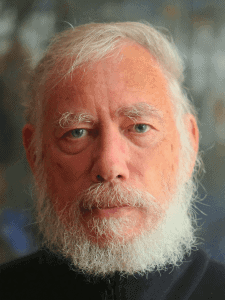 Jan J. Koenderink
Jan J. Koenderink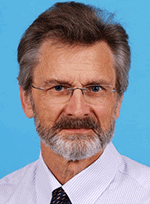 David H. Foster, University of Manchester
David H. Foster, University of Manchester
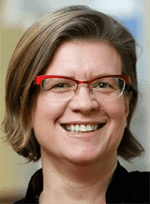 Isabel Gauthier, Vanderbilt University
Isabel Gauthier, Vanderbilt University
 Cathleen Moore, University of Iowa
Cathleen Moore, University of Iowa
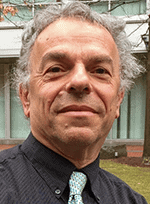 Jeremy Wolfe, Harvard Medical School
Jeremy Wolfe, Harvard Medical School
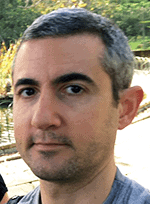 Kurt Debono, SR Research
Kurt Debono, SR Research
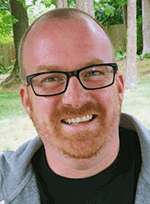 Kevin J. MacKenzie, Oculus
Kevin J. MacKenzie, Oculus
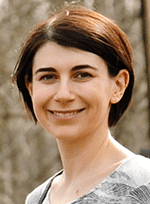 Alex Smolyanskaya, Stitch Fix
Alex Smolyanskaya, Stitch Fix
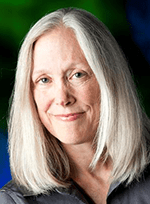 Cheri Wiggs, National Eye Institute
Cheri Wiggs, National Eye Institute
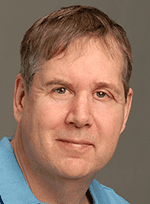 David Brainard, University of Pennsylvania
David Brainard, University of Pennsylvania
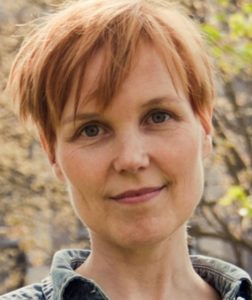 Janneke F.M. Jehee
Janneke F.M. Jehee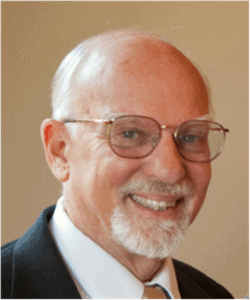 Friday, May 19, 2017, 9:00 – 11:30 am, Pavilion
Friday, May 19, 2017, 9:00 – 11:30 am, Pavilion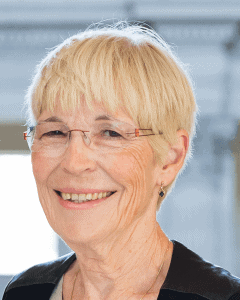 Mary Hayhoe
Mary Hayhoe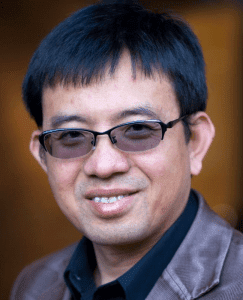 Friday, May 19, 2017, 9:00 – 11:30 am, Talk Room 2
Friday, May 19, 2017, 9:00 – 11:30 am, Talk Room 2